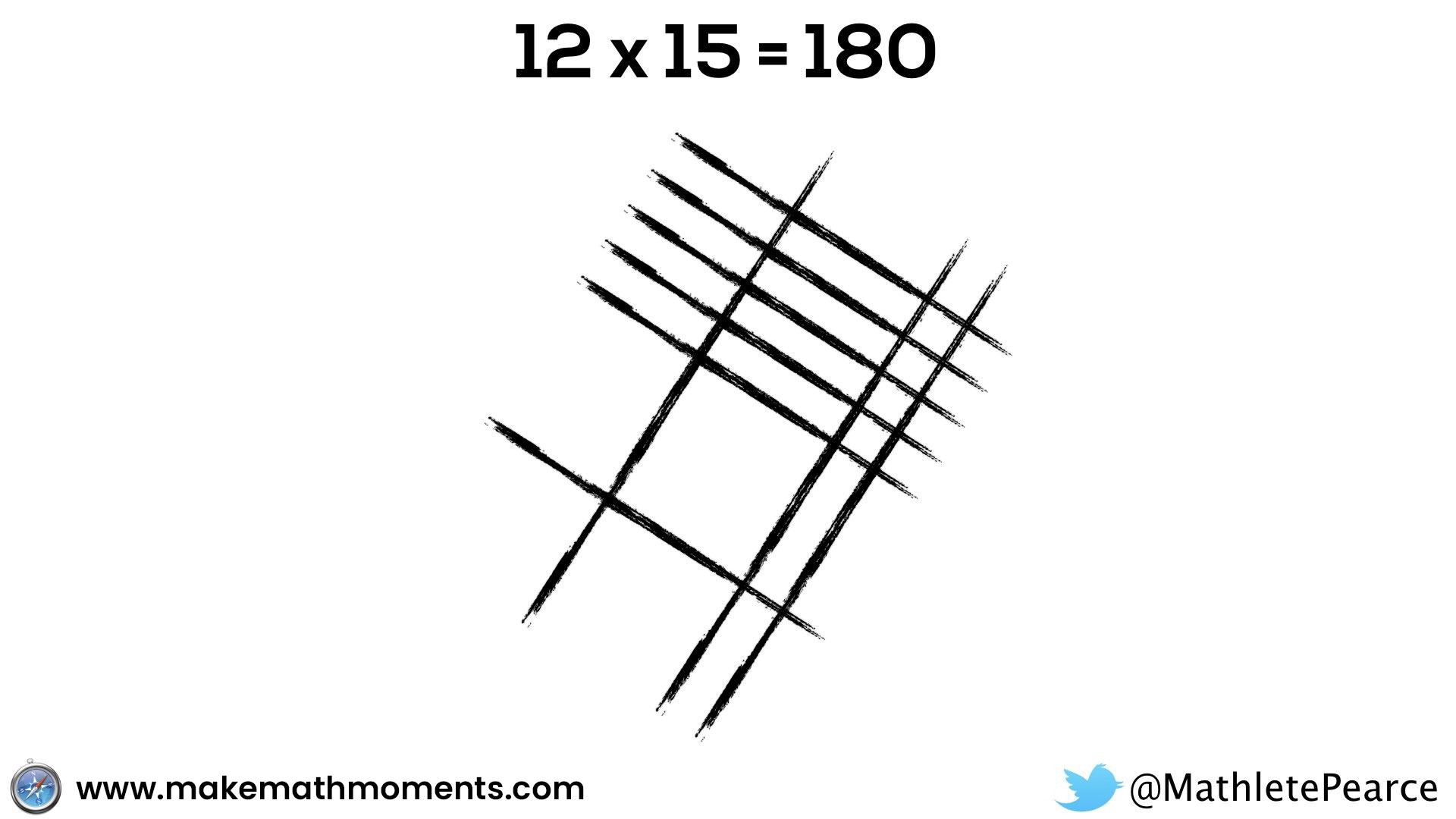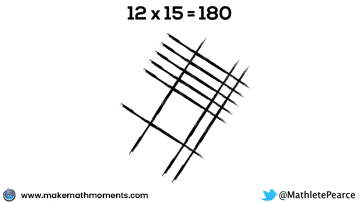JAPANESE MULTIPLICATION ACTIVITY
Japanese Multiplication: Why Diagonal Lines?
You might be asking yourself:
Why do I always see the lines in the Japanese multiplication method on a diagonal?

By showing the lines diagonally, the base ten block array now organizes the intersection points in order of place value. Have a look below:

As you can see above, an opportunity to circle back to place value and the importance of understanding that in base ten, we cannot have any number greater than 9 in any place value column. You’ll notice that the 10 one’s must be swapped out for a ten rod.
So while many might consider this to be a pretty cool “trick”, it is much more powerful if students can articulate where procedures like these come from and why they work.
This activity helps students to develop the intellectual power of the students .
They are very much interested to do this activity
- You draw a set of parallel lines that represent the first digit of each number that has to be multiplied.
- Then draw another set of parallel lines for the second digit of each number, perpendicular to the first set of lines.
- Add dots where each line intersects with another.
- Next, draw a curved line on the left corner, as well as on the right one.
- Count the dots in the left corner, and then the ones on the right.
- Count the dots in the middle (not within either the right or the left lines).
- Then all that's left to do is write the numbers from left to right and you have your multiplication. There's no need for any mental adding or multiplying!
That said, it does become a little more complicated the larger the numbers and the multiplications are. However, for your relatively simple multiplications, this will save you a lot of time and a lot of effort — for those who struggle with numbers and math in any case.

